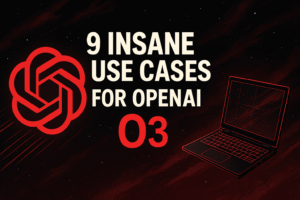The AI Revolution We Didn’t See Coming
The AI industry is no stranger to disruption, but the recent developments surrounding DeepSeek’s R1 model have sent shockwaves through the tech world. With Nvidia experiencing a historic 177% stock drop and the global stock market losing over $1 trillion in a single day, the implications of this breakthrough are monumental. DeepSeek, a Chinese AI company, has introduced a model that not only rivals the best in the industry but does so at a fraction of the cost.
This blog explores the technological advancements, geopolitical dynamics, and economic ramifications of DeepSeek’s R1 model. Is this the beginning of a new era in AI, or are we witnessing the collapse of the AI bubble? Let’s dive in.
Related Read: OpenAI Orion: Navigating AI Future
What is DeepSeek R1, and Why Does It Matter?
DeepSeek’s R1 model is a reasoning-based AI system that competes directly with OpenAI’s GPT-4. Unlike traditional models that rely on brute computational power, R1 leverages algorithmic breakthroughs to achieve unprecedented efficiency. Here’s what sets it apart:
- Cost Efficiency: The R1 model was reportedly trained for just $6 million, a fraction of the cost incurred by U.S.-based companies like OpenAI.
- Open-Source Accessibility: By making their model open-source, DeepSeek has democratized access to cutting-edge AI technology.
- Performance: In benchmarks, R1 rivals OpenAI’s GPT-4, achieving near-parity in reasoning tasks while being 93% cheaper to operate.
This innovation has sparked debates about the future of AI development, with some experts questioning whether U.S. companies are overspending on AI research.
Explore More: How to Get Bolt New for Free
The Geopolitical Lens: U.S. vs. China in the AI Race
The rise of DeepSeek highlights the ongoing tech rivalry between the U.S. and China. The U.S. has long dominated the AI landscape, thanks to companies like OpenAI, Google, and Microsoft. However, China’s open-source approach is challenging this hegemony.
U.S. Export Controls and Their Impact
The U.S. has imposed strict export controls on AI chips, limiting access for countries like China, Russia, and Iran. Despite these restrictions, DeepSeek has managed to develop a model that rivals the best in the West. This raises questions about the effectiveness of these controls and the role of synthetic data in training AI models.
Open-Source as a Strategic Move
By releasing their model as open-source, DeepSeek has not only gained global recognition but also positioned itself as a leader in the AI community. This move could shift the balance of power in the AI race, as open-source models become increasingly competitive.
Related Article: Inflection AI Billion Fundraising
The Technology Behind DeepSeek R1
DeepSeek’s success lies in its innovative approach to AI development. Here are some of the key technological advancements:
- Knowledge Distillation: DeepSeek uses a technique called knowledge distillation to train smaller, more efficient models. This involves using a larger model to generate synthetic data, which is then used to train the smaller model.
- 8-Bit Precision: By using 8-bit floating-point numbers instead of the standard 32-bit, DeepSeek achieves massive memory savings without compromising performance.
- Mixture of Experts: This approach decomposes a large model into smaller, specialized models, allowing for more efficient computation.
These advancements have made the R1 model not only cost-effective but also highly scalable.
Learn More: Microsoft Co-Pilot Studio: AI Agents Transforming Workplace
Economic Implications: Winners and Losers
The introduction of DeepSeek’s R1 model has had a ripple effect across the tech industry. Here’s a look at the winners and losers:
Winners
- Open-Source AI: The success of R1 validates the open-source model, proving that it can compete with proprietary systems.
- Consumers: With cheaper and more efficient AI models, businesses and individuals stand to benefit from reduced costs and improved accessibility.
Losers
- Nvidia: The company’s stock has taken a significant hit, as investors question the long-term demand for high-end AI chips.
- U.S. Tech Giants: Companies like OpenAI and Google may need to rethink their strategies to remain competitive.
Trending Now: Twitch is Dying: How to Save Twitch
The Future of AI: What’s Next?
The rise of DeepSeek’s R1 model marks a turning point in the AI industry. Here are some key takeaways:
- Open-Source Dominance: Open-source AI is poised to play a larger role in the industry, offering a more collaborative and cost-effective approach to innovation.
- Geopolitical Shifts: The U.S. and China will continue to vie for dominance in AI, with open-source models serving as a key battleground.
- Technological Advancements: As companies adopt DeepSeek’s innovations, we can expect to see faster, cheaper, and more efficient AI models in the near future.
A New Era for AI
DeepSeek’s R1 model is more than just a technological breakthrough; it’s a wake-up call for the AI industry. By achieving world-class performance at a fraction of the cost, DeepSeek has set a new standard for what’s possible in AI development. As the industry grapples with the implications of this innovation, one thing is clear: the future of AI is open, efficient, and global.
What are your thoughts on DeepSeek’s R1 model? Share your insights in the comments below!
Explore More: How to Do Local Marketing with TikTok







